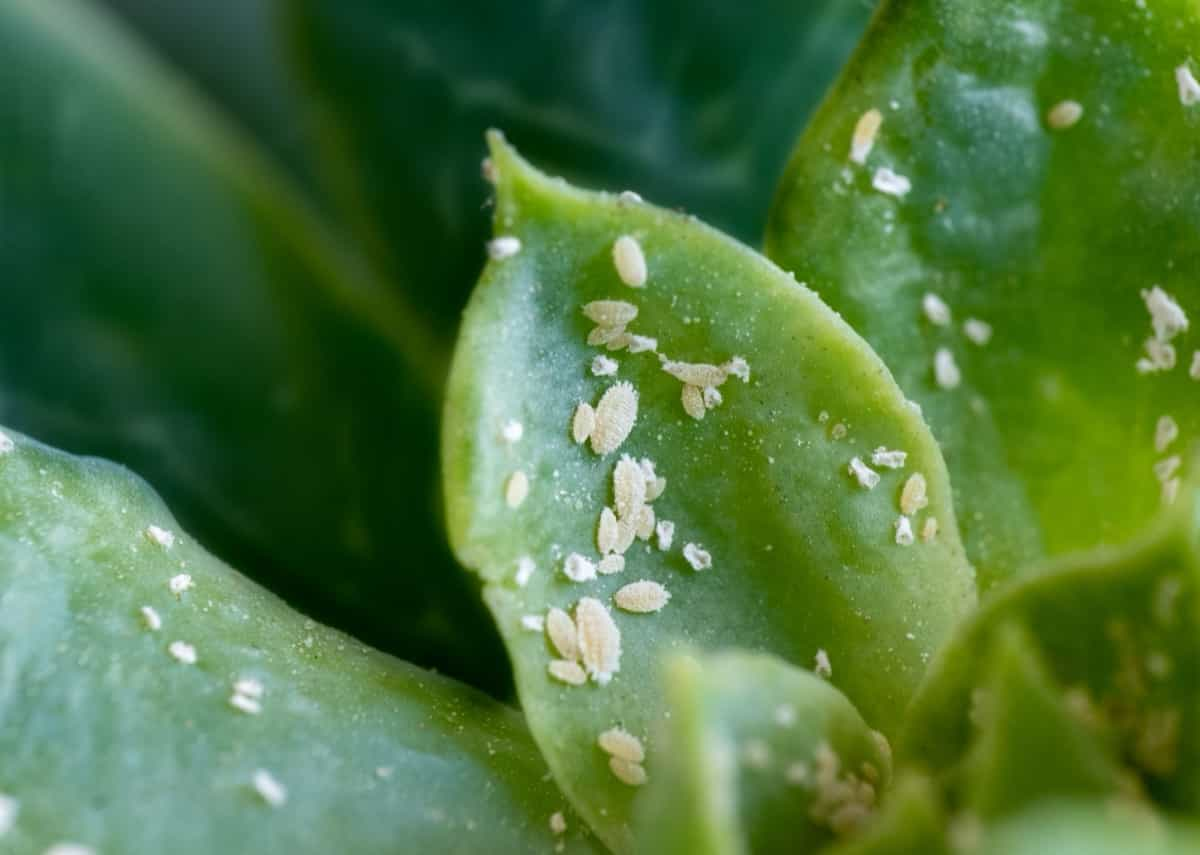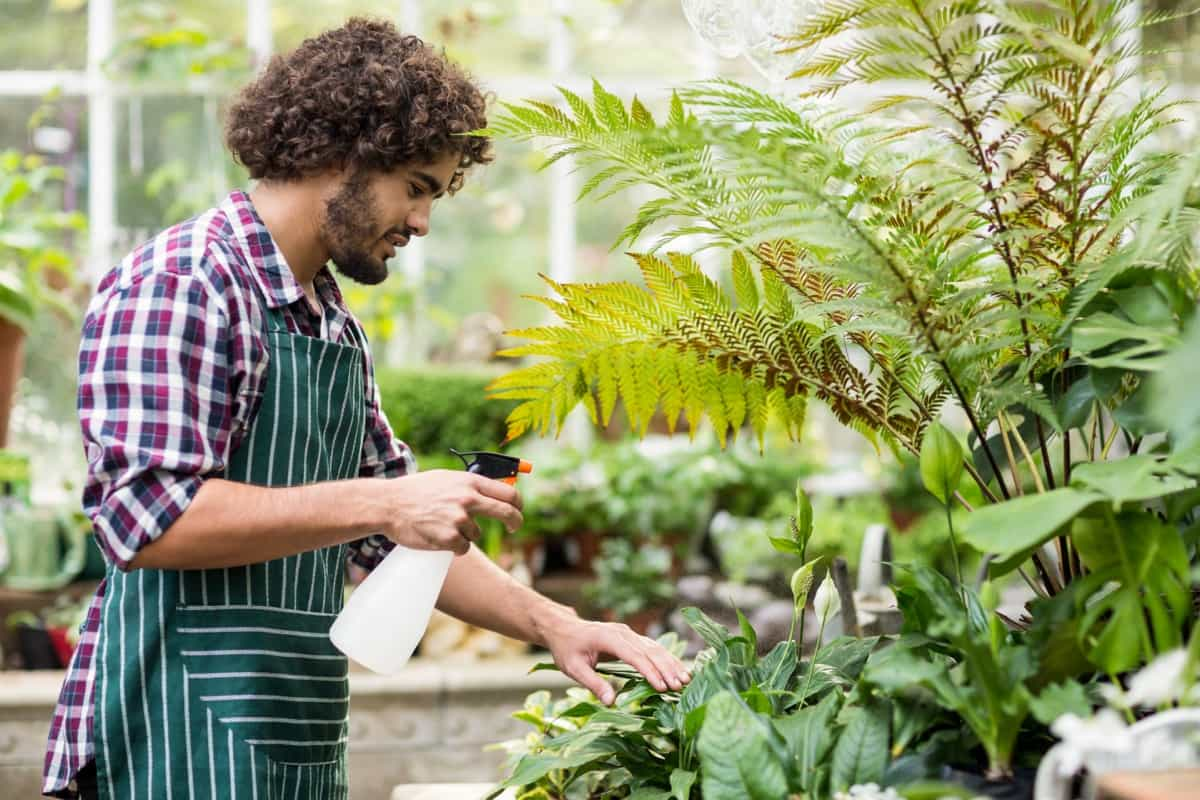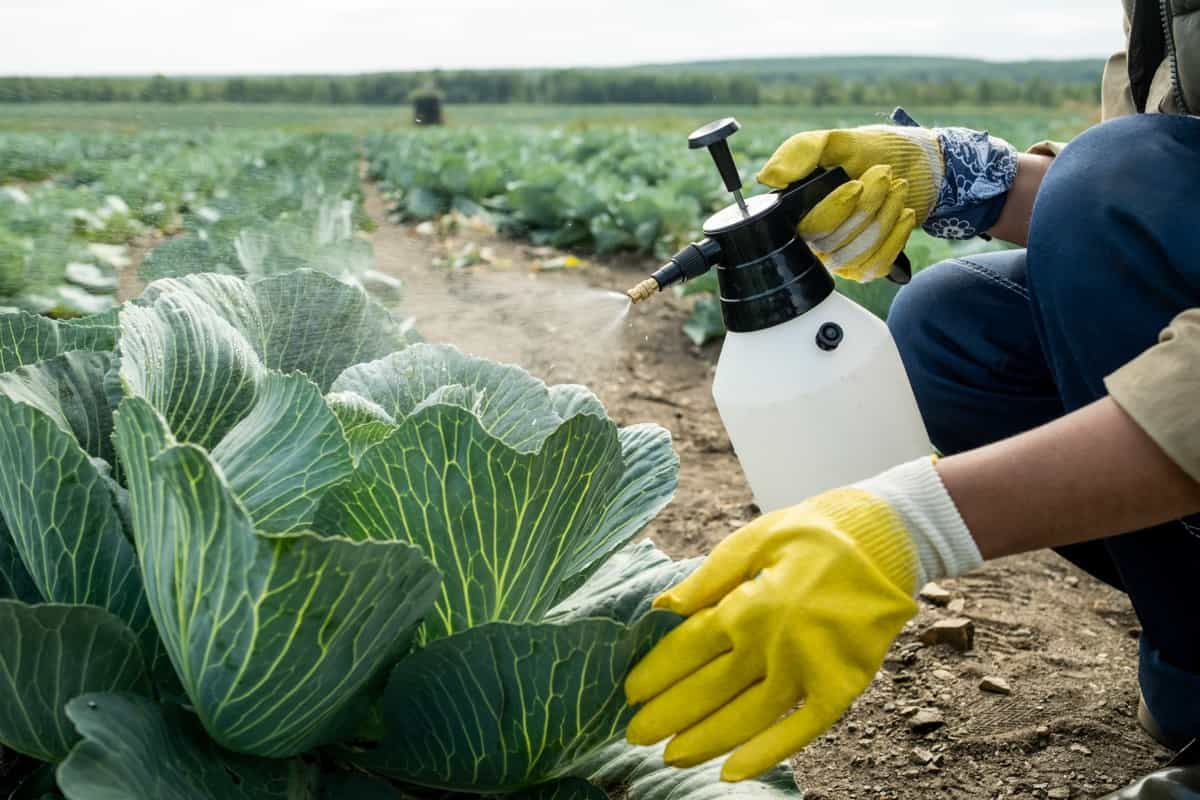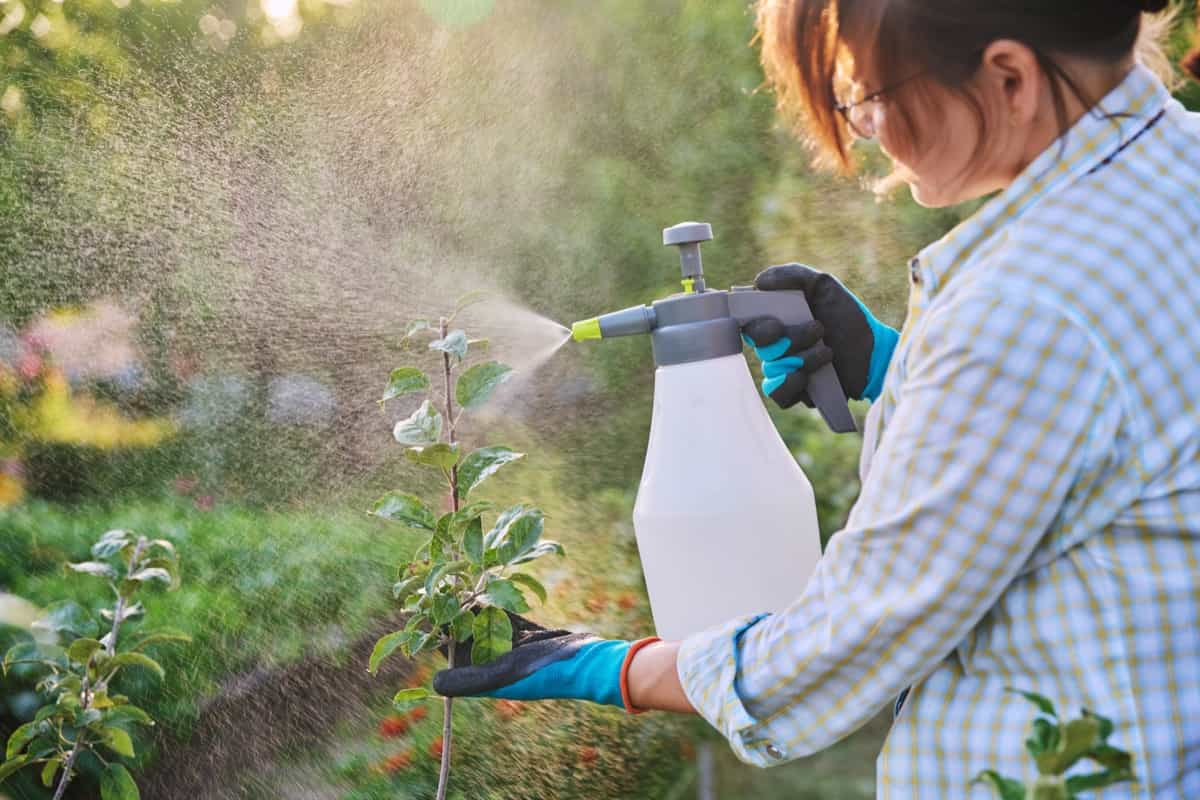Mealybugs can be a common and persistent problem in gardens, causing damage to plants by feeding on their sap. These small, soft-bodied insects often appear as white, cottony masses on plant stems, leaves, and in the soil. If left uncontrolled, mealybug infestations can weaken and even kill plants. However, there are several effective homemade remedies you can use to get rid of mealybugs without resorting to harsh chemicals. Here are ten best homemade remedies for mealybugs in the garden.

Homemade Remedies for Mealybugs
Neem Oil Spray
- Combine 1 quart (1 liter) of warm water in a spray bottle,.
- Add 1-2 teaspoons of neem oil to the water. Neem oil is potent, so you don’t need a large amount.
- Add 1/2 teaspoon of mild dish soap liquid to the mixture. The soap helps the neem oil mix with water and adhere to the pests.
- Close the spray bottle and shake it well to ensure thorough mixing of the ingredients.
- Choose a time to spray when the garden is not in direct sunlight to avoid sunburn.
- Spray the affected plants, making sure to cover the mealybug-infested areas thoroughly. Pay attention to the undersides of leaves, as mealybugs often hide there.
- Repeat the neem oil spray application every 7-14 days, or as needed, until the mealybug infestation is under control.
Alcohol Spray
- In a spray bottle, combine 1 part isopropyl alcohol with 1 part water. For example, if you use 1 cup of alcohol, mix it with 1 cup of water.
- Optionally, add 1/2 teaspoon of dish soap liquid to the mixture. This helps the solution adhere to the pests.
- Close the spray bottle and shake it well to ensure the alcohol and water are thoroughly mixed.
- Choose a time to spray when the garden is not in direct sunlight to avoid sunburn.
- Spray the affected plants, covering the mealybug-infested areas thoroughly. Pay attention to the undersides of leaves where mealybugs often hide.
- Repeat the alcohol spray application every 5-7 days, or as needed, until the mealybug infestation is under control.
Soap Solution
- In a spray bottle, mix 1-2 tablespoons of mild dish soap liquid with 1 liter of water. The concentration of soap may vary based on the sensitivity of your plants and the severity of the infestation.
- Close the spray bottle and shake it well to ensure the soap is thoroughly mixed with the water.
- Choose a time to spray when the garden is not in direct sunlight to avoid sunburn.
- Spray the affected plants thoroughly, making sure to cover the mealybug-infested areas. Pay special attention to the undersides of leaves where mealybugs often hide.
- Repeat the soap spray application every 7-14 days, or as needed, until the mealybug infestation is under control.
In case you missed it: Mealybug Pest Management in Chilli: Symptoms, Treatment, Chemical, Biological, and Organic Control

Garlic Spray
- Peel and crush 1-2 heads of garlic. The more garlic you use, the stronger the solution will be.
- Bring 2 cups of water and boil. Then, add the crushed garlic to this boiling water. Let it simmer for about 20-30 minutes to extract the active compounds from the garlic.
- Allow the garlic and water mixture to cool. Strain the liquid to remove the garlic solids, resulting in garlic-infused water.
- To enhance the effectiveness of the spray, you can add a few drops (about 1/2 teaspoon) of liquid dish soap. This helps the solution adhere to the mealybugs.
- Pour the garlic-infused water (and optional dish soap) into a spray bottle.
- Choose a time to spray when the garden is not in direct sunlight to avoid sunburn.
- Spray the affected plants thoroughly, covering the mealybug-infested areas. Pay attention to the undersides of leaves where mealybugs often hide.
Chili Pepper Spray
- Finely chop or crush hot chili peppers. You can use fresh peppers or chili powder.
- Bring 2 cups of water and boil.
- Add the finely chopped or crushed chili peppers to the boiling water. Let the mixture simmer for about 10-15 minutes to extract the spicy compounds.
- Allow the chili pepper and water mixture to cool. Strain the liquid to remove the chili pepper solids, resulting in chili pepper-infused water.
- Pour the chili pepper-infused water (and optional dish soap) into a spray bottle.
- Choose a time to spray when the garden is not in direct sunlight to avoid sunburn.
- Spray the affected plants thoroughly, covering the mealybug-infested areas. Pay attention to the undersides of leaves where mealybugs often hide.
Essential Oils
- In a spray bottle, pour 2 cups of water.
- Add 1-2 teaspoons of the selected essential oil(s).
- Optionally, add a few drops (about 1/2 teaspoon) of liquid dish soap. This helps the solution adhere to the mealybugs.
- Close the spray bottle and shake it well to ensure the essential oil(s) and water are thoroughly mixed.
- Choose a time to spray when the garden is not in direct sunlight to avoid sunburn.
- Spray the affected plants thoroughly, covering the mealybug-infested areas. Pay attention to the undersides of leaves where mealybugs often hide.
- Repeat the essential oil spray application every 7-14 days, or as needed, until the mealybug infestation is under control.
Diatomaceous Earth (DE)
DE is an effective and natural solution to combat mealybugs in the garden. Composed of fossilized diatoms, DE has microscopic, sharp edges that penetrate and dehydrate the exoskeleton of mealybugs upon contact. To use, lightly dust affected plants and the surrounding soil with food-grade diatomaceous earth.
In case you missed it: Mealybug Pest Management in Mango: Symptoms, Treatment, Chemical, Biological, Natural, and Organic Control

This creates a barrier that effectively controls mealybug infestations without harming beneficial insects or plants. DE is non-toxic and environmentally friendly, making it a safe alternative for garden pest control. Regular application, especially after rainfall or irrigation, enhances its efficacy in managing and preventing mealybug populations in your garden.
Beneficial Insects
Encouraging beneficial insects is a natural and sustainable method to combat mealybugs in the garden. Ladybugs are voracious predators of mealybugs, feeding on both larvae and adults. Lacewings and parasitic wasps are other valuable allies, with their larvae consuming mealybugs.
Additionally, predatory beetles, such as Cryptolaemus montrouzieri, commonly known as the mealybug destroyer, contribute to biological control. To attract these beneficial insects, plant diverse, insectary-friendly vegetation, avoiding broad-spectrum pesticides that harm both pests and allies.
Homemade Mealybug Traps
Crafting homemade mealybug traps is an effective and cost-efficient method to control infestations in the garden. Combine water, dish soap, and a bit of cooking oil in a shallow dish. Mealybugs attracted to the solution, drown upon contact. Alternatively, create a sticky trap by coating yellow cardboard or plastic with a layer of petroleum jelly.
Place these traps near affected plants, as the yellow attracts mealybugs, and the sticky surface prevents their escape. Regularly inspect and replace traps as needed. This DIY approach helps reduce mealybug numbers without resorting to chemical pesticides, contributing to a healthier and more environmentally friendly.
Natural Predators
Ladybugs are renowned for consuming mealybugs at various life stages, offering a natural and voracious solution. Lacewings and parasitic wasps also play crucial roles, with their larvae preying on mealybugs. Additionally, predatory beetles like Cryptolaemus montrouzieri, known as the mealybug destroyer, provide efficient biological control.
In case you missed it: Mealybug Management in Sugarcane: Symptoms, Treatment, Chemical, Biological, Natural, and Organic Control

Cultivate a garden that attracts and sustains these beneficial insects by incorporating diverse plants, avoiding broad-spectrum pesticides, and providing shelter. This promotes a harmonious ecosystem, allowing natural predators to thrive and effectively manage mealybug populations without the need for harmful chemical interventions.
Conclusion
In conclusion, these ten homemade remedies offer effective and natural solutions to tackle mealybug infestations in the garden. From neem oil and soap sprays to essential oil blends and beneficial insect encouragement, these simple recipes provide eco-friendly alternatives, promoting a healthy garden without resorting to harsh chemicals.
- Beneficial Insects in Pest Management
- Natural Solutions for Pest Control in Flower Gardens
- Types of Fungicides Used in Agriculture
- Common Issues in the Fruit Development Stage of Pomegranate Farming
- Fruit Development Issues in Papaya: Easy Solutions and Treatment
- Soil-Borne Diseases and How to Protect Your Plants
- Practices to Prevent Disease Spread in the Garden
- From Wilted to Thriving: How to Treat Root Rot Naturally in Houseplants
- Natural Remedies to Cure Brown Spots on Fig Tree Leaves